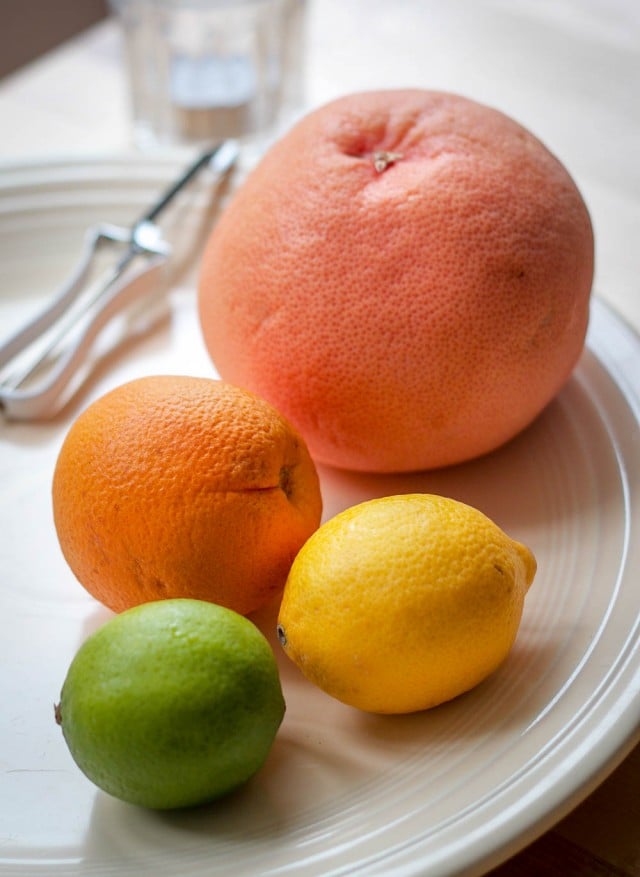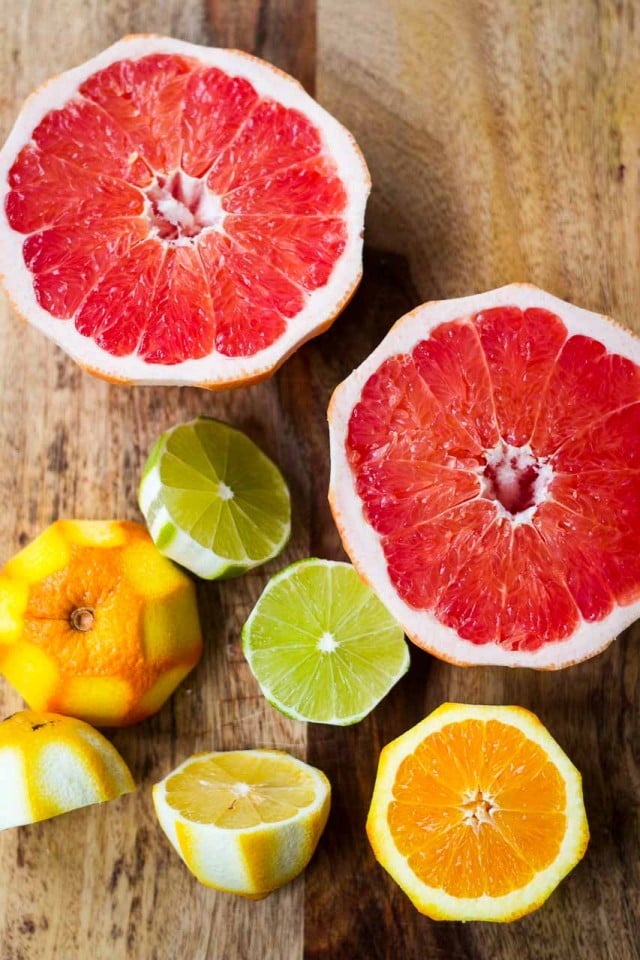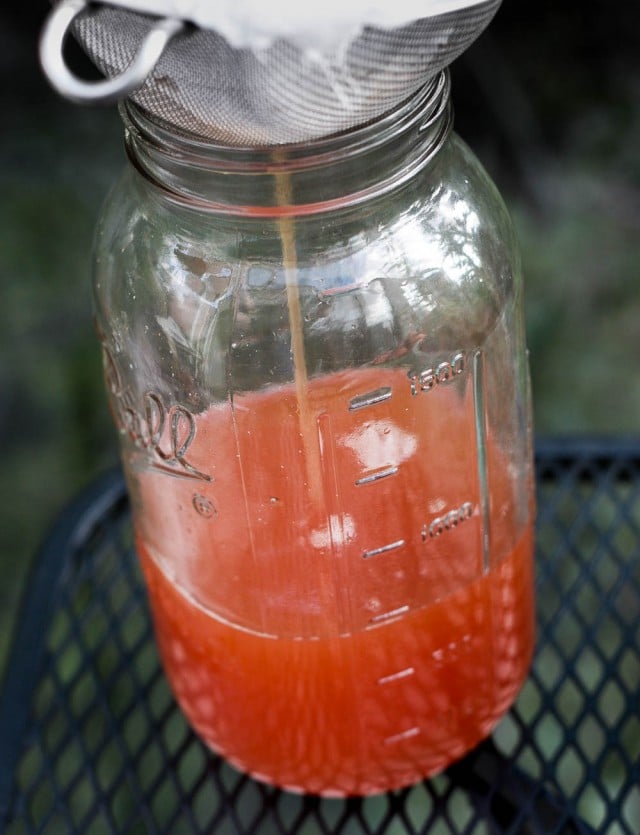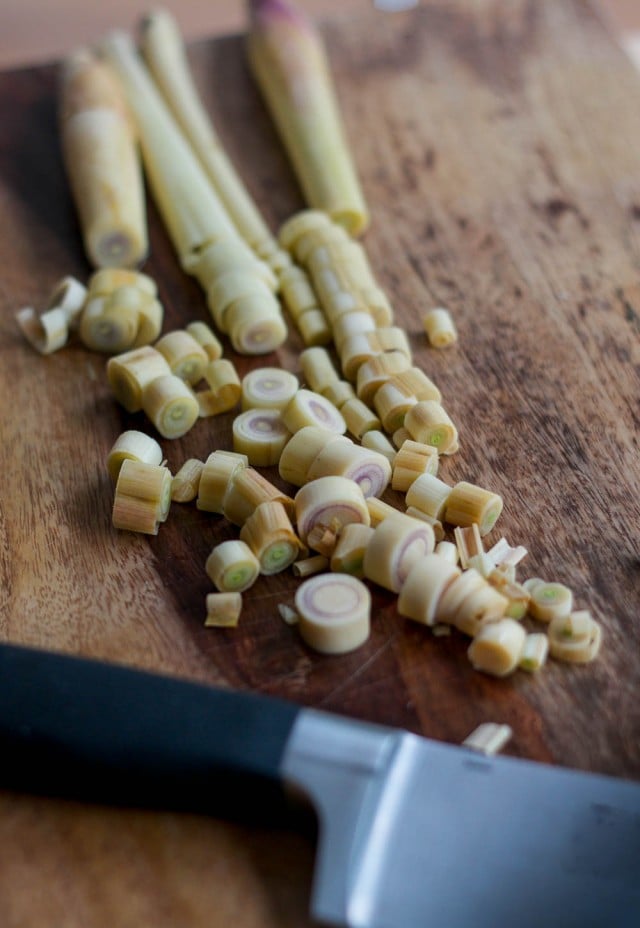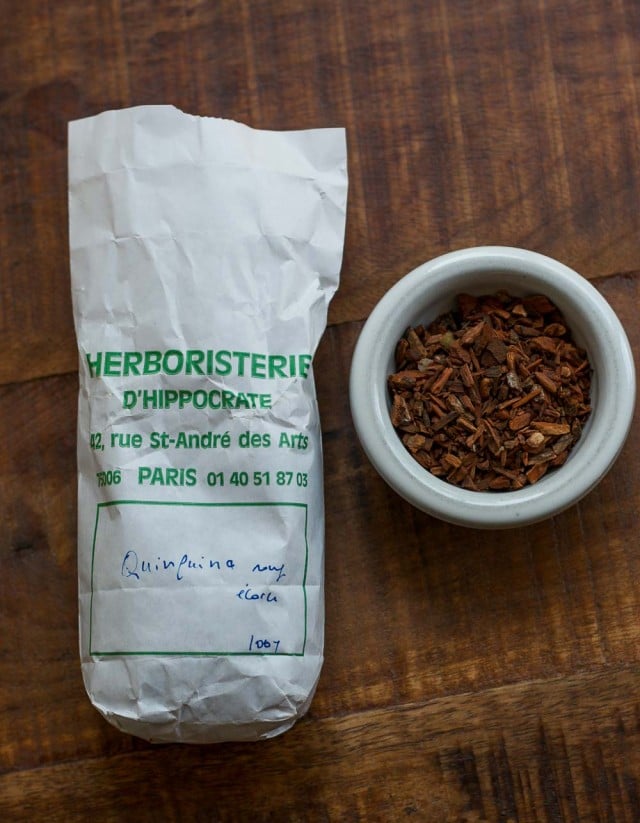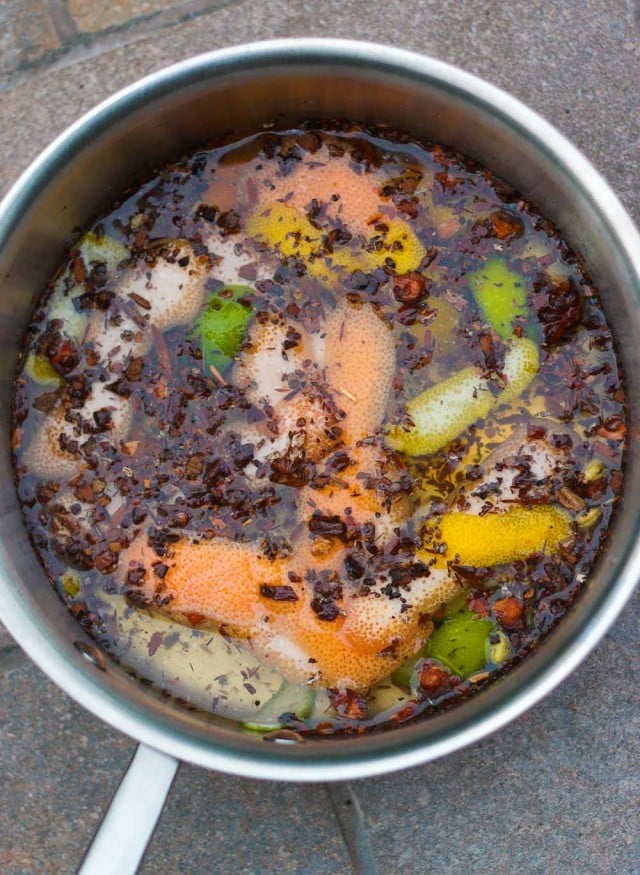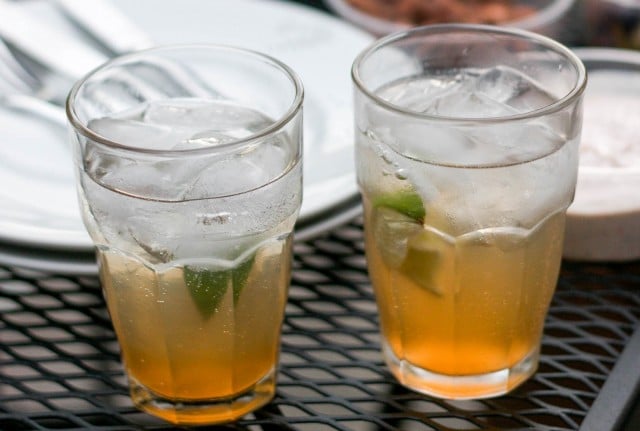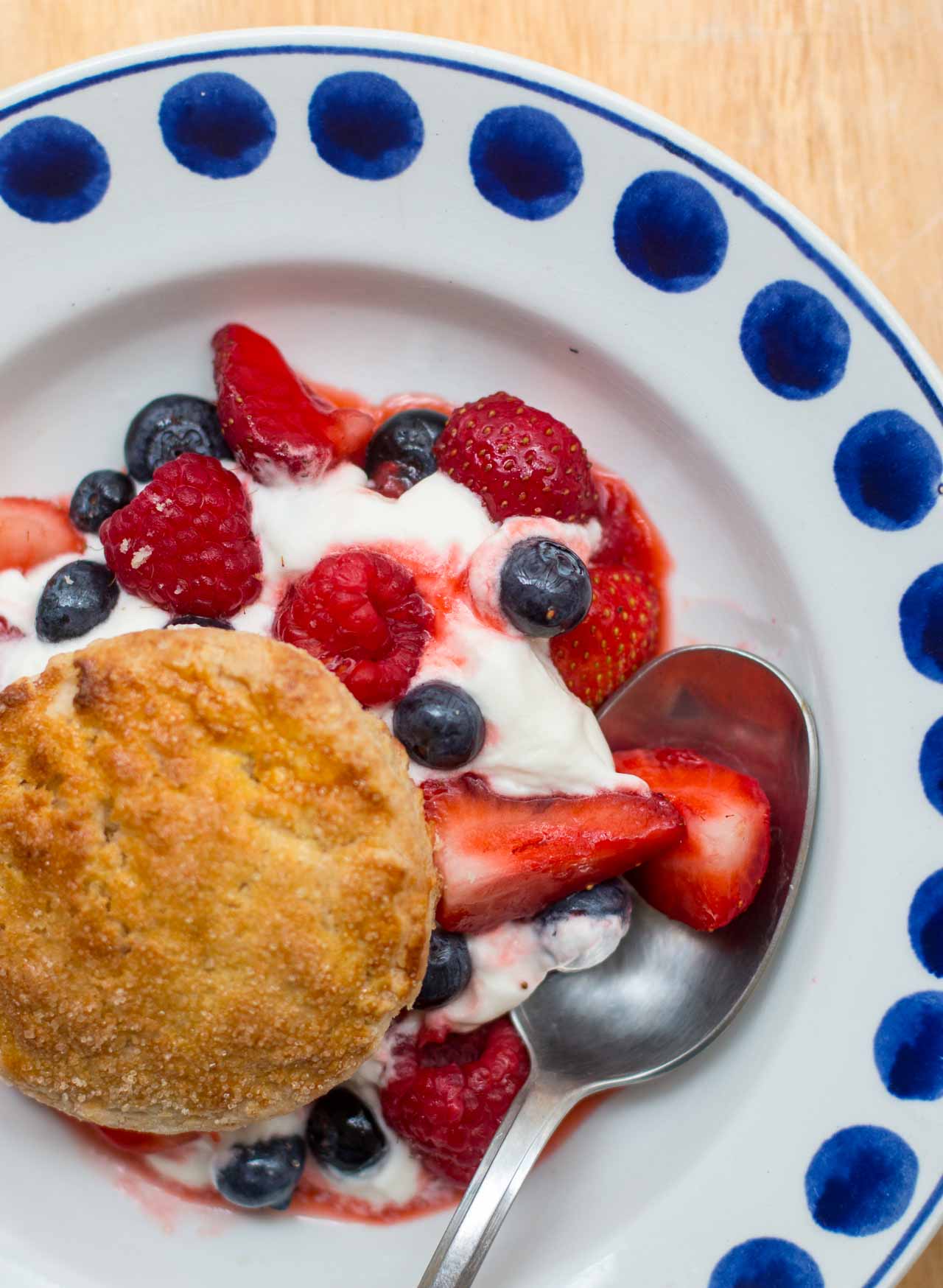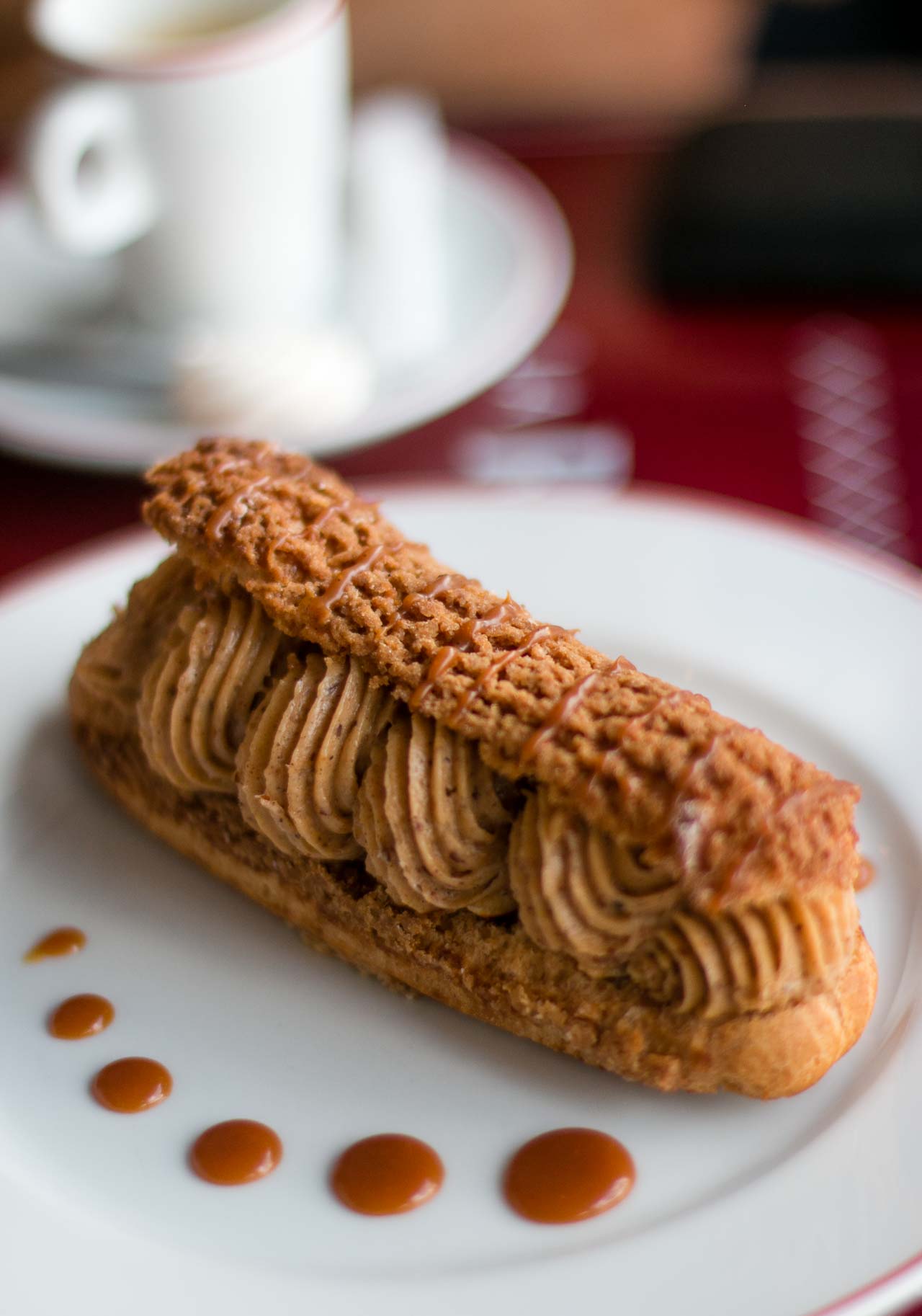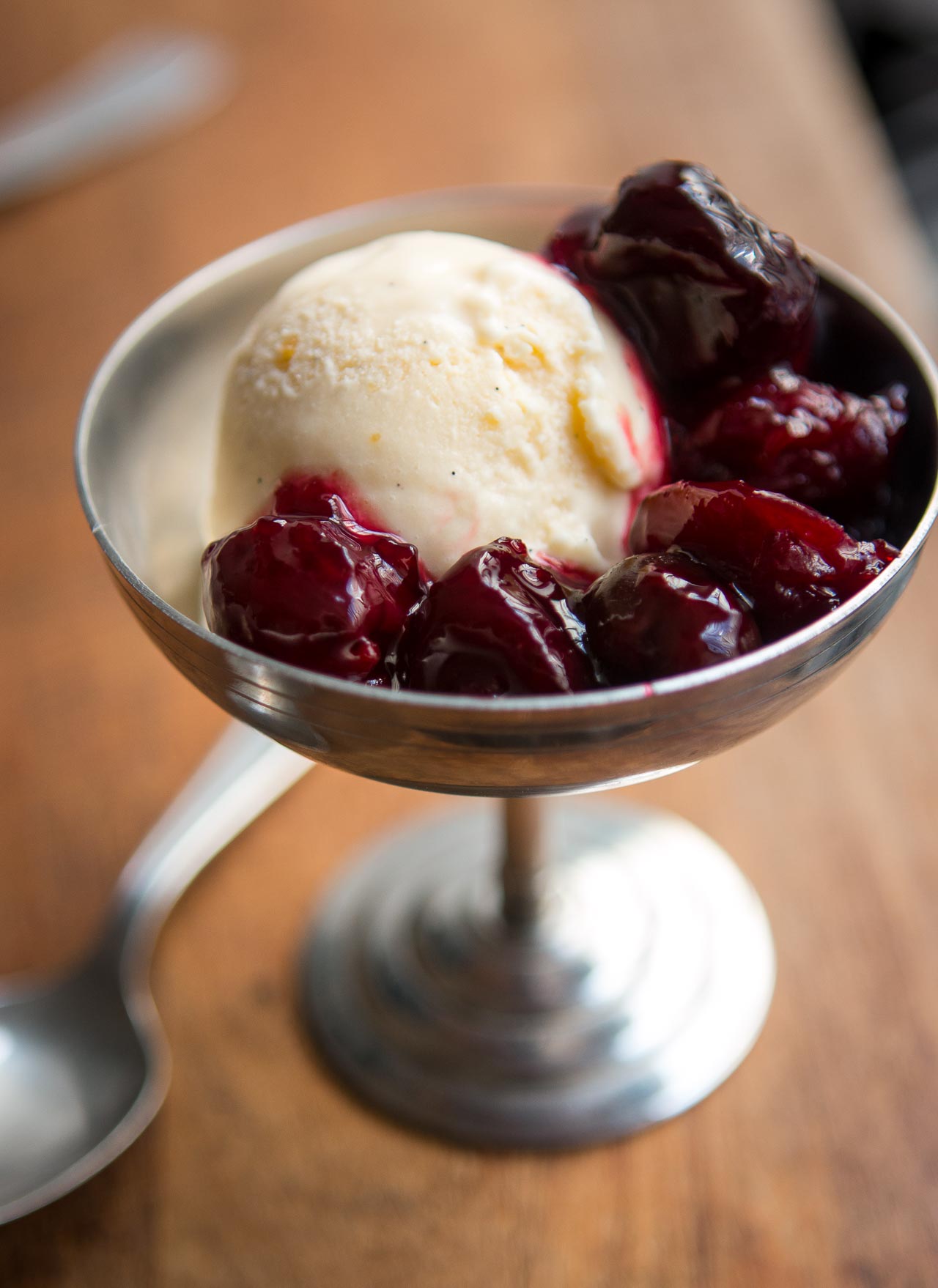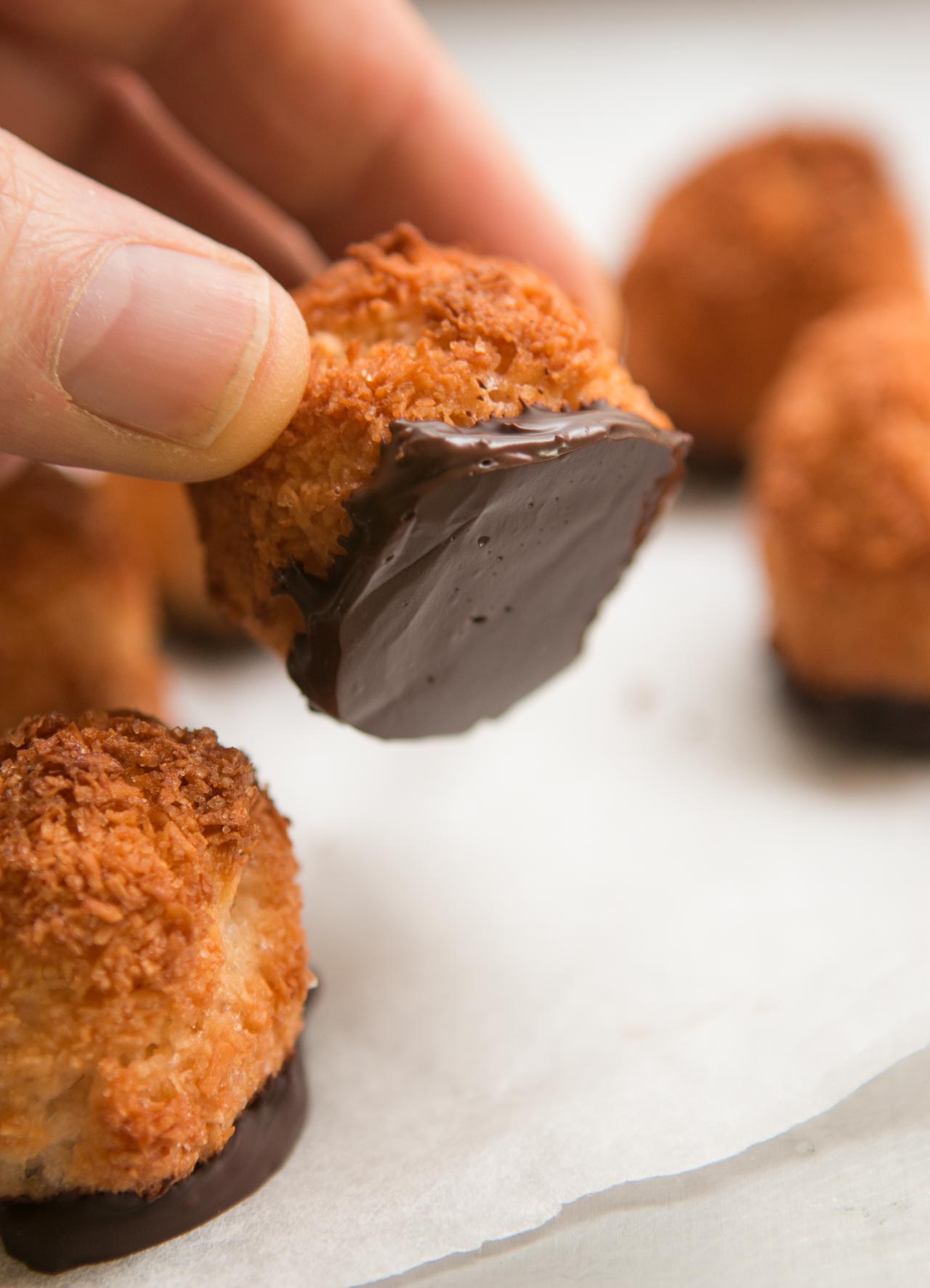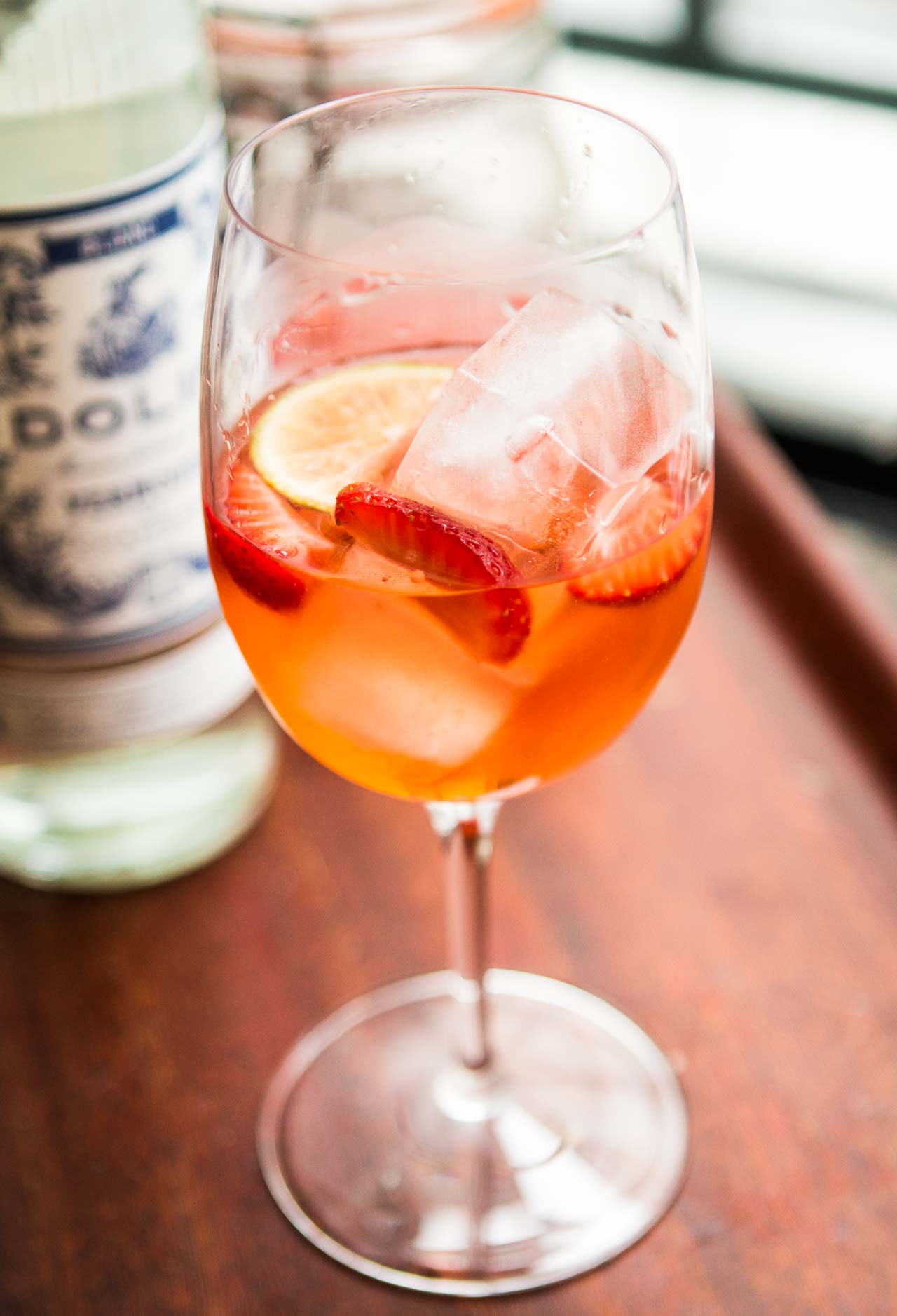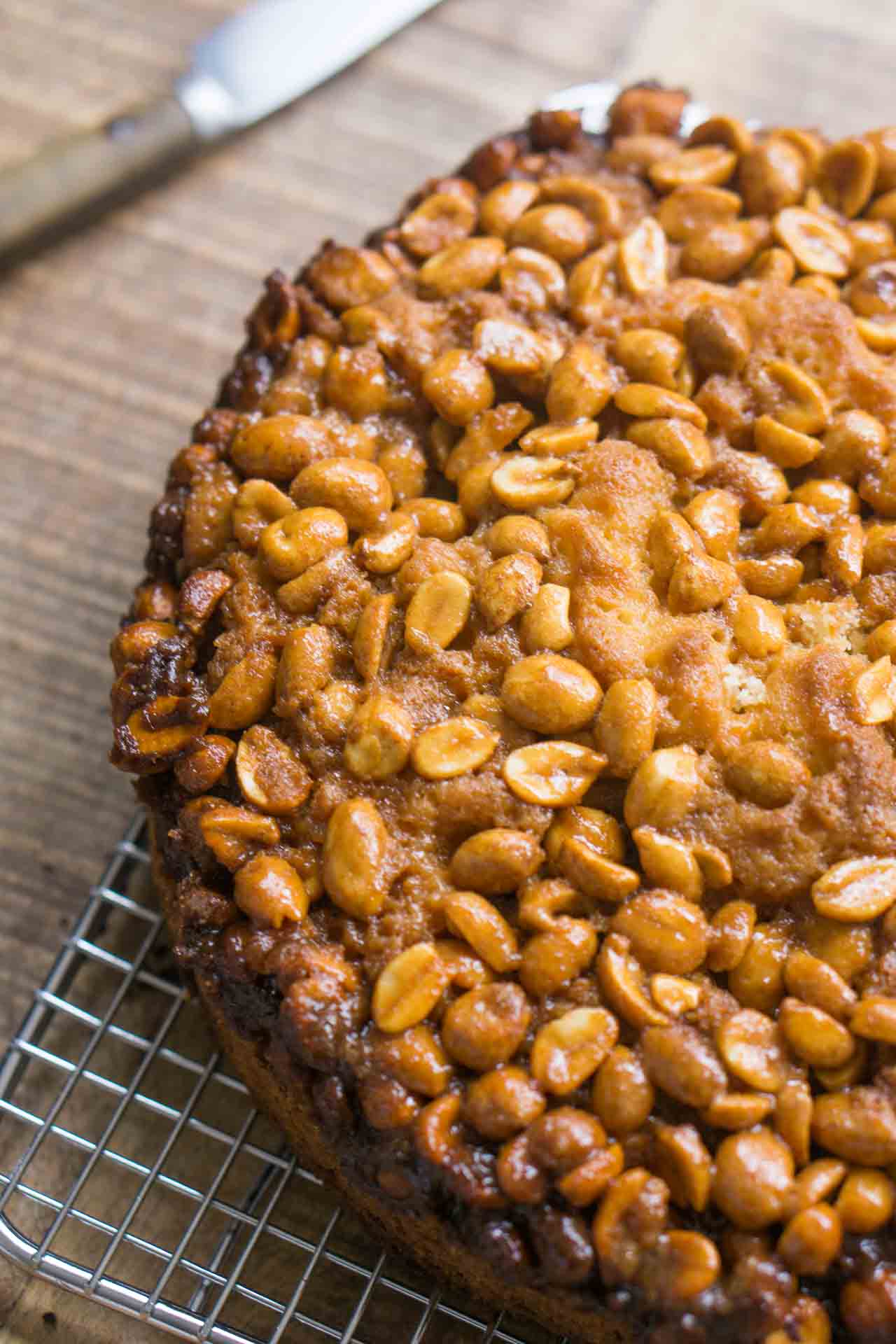Homemade Tonic Water
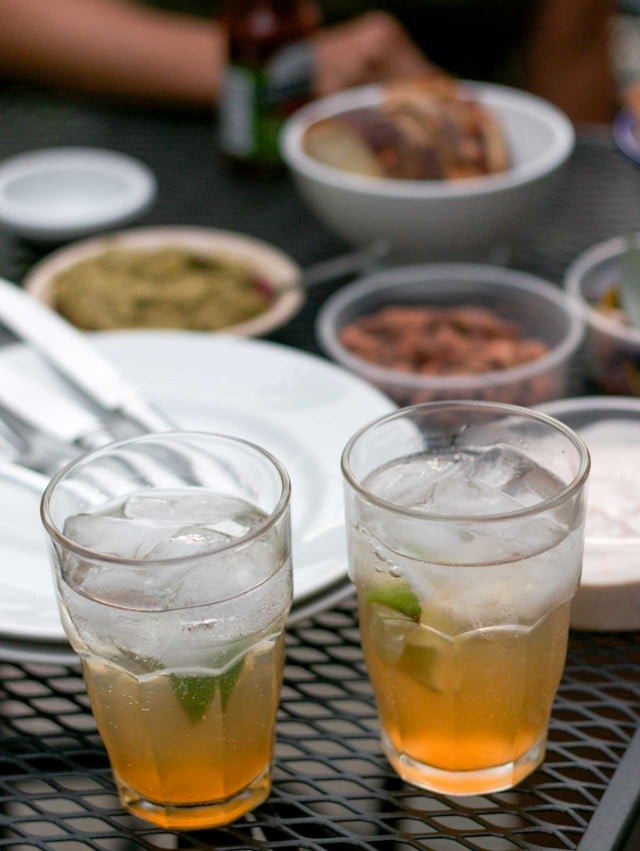 Jennifer McLagan always seems to know what we want to read about, and cook, before even we do. She wrote a slew of popular and award-winning books, which include Fat (which bravely came out during the low-fat craze, and nevertheless was a big hit), Bones, and now, Bitter: A Taste of the World’s Most Dangerous Flavor.
Jennifer McLagan always seems to know what we want to read about, and cook, before even we do. She wrote a slew of popular and award-winning books, which include Fat (which bravely came out during the low-fat craze, and nevertheless was a big hit), Bones, and now, Bitter: A Taste of the World’s Most Dangerous Flavor.
The book is a celebration of flavors that are on the cutting edge, taste-wise. Some things, like bitter melon, I can’t handle. Sorry. But others, like greens such as frisée and Belgian endive, bittersweet chocolate, and citrus fruits, I’m totally on board with.
She also seems to know what we want to drink because she came over to my place in Paris and brought a bottle of homemade tonic water. I looked at the amber brew and put it in the refrigerator until I could figure out what to do with it. I’d never imagined making my own tonic water and was happy to buy the little bottles of the upscale brew, ever since switching away from the commercial brands. And once you’ve gone to the good side of tonic water, it’s hard to go back to the stuff in plastic quart bottles. Once I finally worked up the courage to open the bottle of flavorful mixer that she had given me and used it in a few cocktails, I was hooked.
After a trip to Ireland where I attended a gin tasting, my dormant love of gin and tonics had been reawakened, (as was my appreciation for the Irish…), and I started stocking my bar with gin again. At the tasting, master distiller Desmond Payne took us through a tasting of gins, and also confessed that he needs his daily gin and tonic. Which, to be honest, I’m starting to have the same feelings about this very summer too.
When Mr. Payne traveled through Japan, he told us, he learned that quinine is considering a drug so he has to find another mixer for his daily dose of gin and tonic to replicate that flavor. (He uses some black tea, which he found has some of the same flavor compounds.) But drinking excessive amounts of quinine-rich tonic water isn’t a good idea. And it’s never a good idea to drink too much of anything, including gin, tonic, or gin and tonics. So take it easy on ’em, and know your limits.
Closer to home, in other places like France and the United States, quinine isn’t considered a drug and you can get chinchona at an herbalist. I took a walk over to an herbalist near Saint-Michel and after explaining to the owner what tonic water was (in France, they often refer to it just as le Schweppes, by the brand name), she still had no clue as to what I was talking about. Which sometimes happens, but is usually in reference to my American-accented French.
Fortunately the name in Latin is close to the way it’s pronounced in French, although you don’t pronounce the “h” in French. When I dropped that, and replaced the “ch” with a “q” (which, if it sounds complicated to you, welcome to my life…) she understood. And soon I was heading home with a tidy little packet of chopped bark.
So I set about making my own tonic water, inspired by Jennifer’s recipe. It takes a couple of days to make, and settle – and it took me a bit of time to find fresh lemongrass – another trip, this time to the Asian market was in order. (And people ask me, “What do you do all day?”) But once I had it all together, including myself, I infused the chinchona bark with the spices, citrus, and chopped lemongrass, then waited patiently for the magical brew to grace my next batch of gin and tonics.
One thing you will find is that the flavor is a lot more powerful than bottled tonic water, so this gets cut with sparkling water when using it, due to its strength. And like gin, homemade tonic water should be enjoyed in moderation. À votre santé!
Tonic Water
- 1 quart (1L) water
- 1 grapefruit
- 1 orange
- 1 lemon
- 1 lime
- 2 1/2 ounces (75g) chopped lemongrass , (use the bottom 2/3rds of the stalks, trimming off the root end first)
- 3 tablespoons (33g) citric acid
- 1/4 cup (22g) chopped chinchona bark
- 10 allspice berries
- 5 cardamom pods, slightly crushed
- 2 small star anise
- 1 teaspoon coarse sea or kosher salt
- 1/4 teaspoon black peppercorns
- 1 1/2 cups (375ml) simple syrup, (see headnote)
- Pour the water into a medium-sized nonreactive saucepan. Add the zest from the grapefruit, orange, lemon, and lime. (You can remove it with a sharp vegetable peeler, in strips, or with a citrus zester.) Halve, then juice the citrus fruits and add the juice to the saucepan.
- Add the lemongrass, citric acid, chinchona bark, allspice, cardamom, star anise, salt, and black peppercorns. Bring the mixture to a boil and reduce to a simmer. Cover with a lid, leaving it slightly askew, and let it simmer gently for 15 minutes. Remove from heat, uncover, and cool to room temperature.
- Pour into a container, such as a large screw-top jar, and chill for 2 days in the refrigerator, shaking it gently a couple of times a day.
- Strain liquid through a fine mesh strainer, preferably into a large measuring cup (which will make the next step easier). Discard the spices, lemongrass, bark, and citrus peels. Strain the mixture again, this time through a strainer lined with several layers of cheesecloth, muslin, or a coffee filter. (If using a coffee filter, it’ll remove most traces of the spice powder but it’ll take a bit of time, so be patient.)
- Add the sugar syrup, then pour into clean bottles or screw-top jars and refrigerate until ready to use.
- To use the tonic water: Pour off the tonic water, avoiding disturbing any bark and spice sediment that might settle into the bottom of the bottle or jar, then add an equal amount of sparkling water to obtain the quantity that you need. So to make 1 cup (250ml) of tonic water, you’ll use 1/2 cup (125ml) of the tonic water mixture, and 1/2 cup (125ml) sparkling water.
Notes
To Buy Chinchona Bark and Citric Acid: I bought my chopped chinchona bark at the Herboristerie d’Hippocrate (42, rue St-André des Arts, in Paris), and the citric acid at Sabah, an Arab market adjacent to the Marché d’Aligre). Check in your area for spice markets or stores that specialize in Arab or Indian foodstuffs for citric acid. Supermarkets sometimes stock citric acid in their canning and preserving aisle, or even a pharmacy.
Online, citric acid, sometimes called sour salt, is available from King Arthur Flour and chinchona is available at Penn Herb Company. You can buy citric acid and chinchona bark on Amazon as well. To find other sources, check out my post, How to Find Foods Mentioned on the Site.
